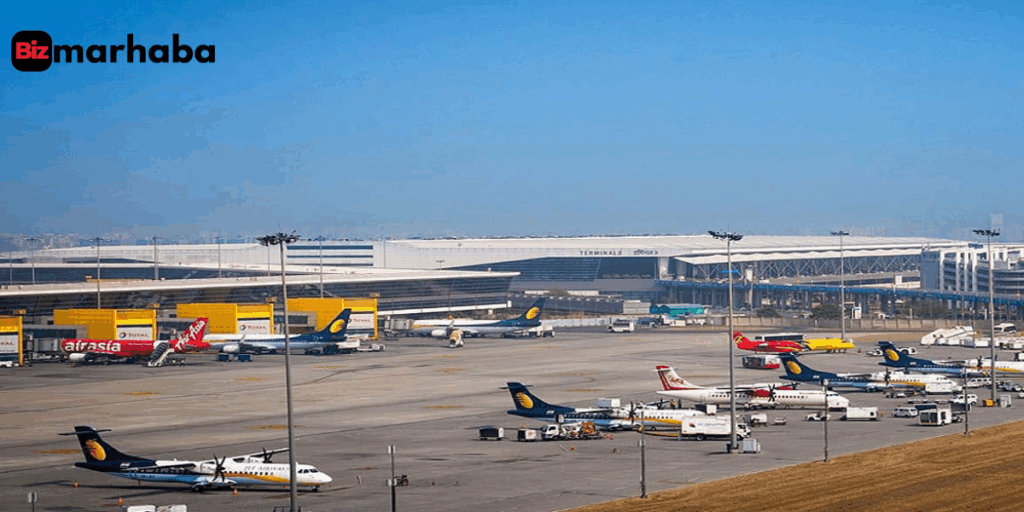- The challenge: paperwork, queues, confusion
- What is the E Arrival Card?
- Why it matters especially for UAE–India travellers
- Who needs to register? Any exceptions?
- Step-by-step: How to complete e-Arrival Card registration
- Benefits & gains: What you get out of it
- The tricky part: Possible issues and challenges
- What changes immediately, and what stays
- What to do now: Checklist for UAE travellers
- Why this marks a new era for India travel
- Frequently Asked Questions
- ALSO READ:
You land in Delhi after a long flight from Dubai or Abu Dhabi. You’re tired, jet-lagged, eager to get through immigration and see family or start your trip. But then you realize: there’s that old arrival card to fill-out, with queues, pens, scribbles, and checks. What if you could skip that hassle? That’s exactly what happens now, starting October 1, 2025, travellers arriving in India (especially at Delhi Airport) will face a smoother, faster arrival thanks to a new e arrival card registration system.

This isn’t just a cosmetic upgrade. It aims to cut delays, reduce paperwork, free up staff, and make your first moments in India less stressful. If you’re travelling to India from UAE, this change matters to you. Let’s unpack exactly how it’ll work, what you need to do, and what benefits and challenges lie ahead.
The challenge: paperwork, queues, confusion
For years, foreign nationals flying into India have had to fill out paper disembarkation or arrival cards once they arrive, handwritten, often under time pressure, in airport halls already crowded with passengers. Mistakes, illegible writing, and bottlenecks at immigration counters are common.
India’s Ministry of Home Affairs has decided that those days are numbered. Starting October 1, 2025, the physical arrival card system will be replaced by an e-Arrival Card for foreign nationals.
Delhi Airport (IGI) is the first to launch the e-Arrival facility. The airport operator, Delhi International Airport Limited (DIAL), in coordination with the Bureau of Immigration, says the change will ease arrival, reduce queues, cut paper use, and align with international standards.
What is the E Arrival Card?
Think of it as a digital version of the old arrival card: you submit your travel, passport, accommodation, and contact details online before landing, instead of scrambling to fill paper in the immigration hall.
Here’s how it works:
- You’ll fill in the e-Arrival Card up to 72 hours (3 days) before your scheduled arrival.
- The platform will be available via several channels:
• The Bureau of Immigration portal
• The Indian Visa Online website or Su-Swagatam mobile app
• Delhi Airport’s own site - You’ll input details like: passport number, nationality, your address in India, flight details, purpose of visit.
- After submission, you’ll receive a digital confirmation. You may need to show it (on your phone or printed) on arrival.
By removing the paper step, immigration counters can work faster, reducing the time new arrivals spend stuck in line.
Why it matters especially for UAE–India travellers
The UAE–India air route is one of the world’s busiest corridors. Holidays, business travel, family visits, it all flows heavily between Abu Dhabi, Dubai, Sharjah, and cities in India. During peak periods (school breaks, Diwali, Eid), Delhi Airport can get overwhelmed.
For travellers flying from UAE, here’s what changes:
- You won’t have to juggle a pen or stand in line just to fill a form on arrival.
- Your arrival procedure becomes more predictable, arriving at a digital confirmation is clear.
- Peak queues could shrink significantly.
- It aligns flight-in schedules from UAE to India with fewer frictions at arrival.
Officials also emphasize sustainability: less paper use, fewer physical forms meaning lower waste.
Who needs to register? Any exceptions?
The e Arrival Card applies only to foreign nationals (non-citizens) arriving in India.
If you’re an Indian citizen or OCI cardholder, you are not required to use the e Arrival card. In fact, many Indian/OCI travellers already have access to a Fast Track Immigration – Trusted Traveller Programme (FTI-TTP) system, launched in June 2024.
In short: If your passport is non-Indian, plan to complete the e-Arrival card. If you’re Indian/OCI, you continue under separate immigration channels.
Step-by-step: How to complete e-Arrival Card registration
Here’s a simple walkthrough:
- Check when your travel date is. The window opens 72 hours before arrival.
- Access one of the platforms (BOI portal, Indian Visa Online, Su-Swagatam app, Delhi airport website).
- Fill in basic data:
- Passport number, nationality, name, date of birth
- Flight number and arrival date
- Address in India (hotel, friend’s address)
- Purpose of visit (tourism, business, etc.)
- Passport number, nationality, name, date of birth
- Submit the form. Review carefully, especially your name and passport details — small errors could lead to delays.
- Receive your confirmation (digital receipt). Keep a copy, print or screenshot.
- At arrival, present your passport, visa/e-visa, and the e-Arrival confirmation to immigration officials. They will match and process you faster.
Because the old paper route is being removed, you must complete this step ahead of your journey.
Benefits & gains: What you get out of it
- Speed: No more waiting to fill forms after long flights.
- Efficiency: Immigration counters can pre-verify data, reducing errors and bottlenecks.
- Predictability: You know in advance that your arrival is cleared digitally.
- Less stress: No fumbling with pens, desks, or missing fields.
- Sustainability: Less paper, less waste. Delhi Airport mentions cutting paper use as a goal.
In short: better passenger experience, smoother operations, more predictable flows.
The tricky part: Possible issues and challenges
- Tech glitches or downtime: If the portal or app is down just before your flight, you may be stuck. Always try well ahead of time.
- Errors in your submission: Typos in passport number or flight code may cause mismatch at immigration.
- Last-minute changes: If your arrival is delayed beyond the 72-hour window, will the form still be valid?
- Acceptance by all airports: Right now, the rollout is confirmed for Delhi Airport. Other airports may adopt later.
- User awareness: Some travellers may not know about the requirement and arrive unprepared, causing confusion.
Still, the benefits are compelling and system administrators are expected to have fallback support.
What changes immediately, and what stays
Starting October 1, 2025, the paper arrival/disembarkation card is formally abolished for foreign travellers.
But many other arrival protocols remain the same:
- You still need a valid visa or e-visa.
- You’ll present your passport and any supporting travel documents.
- Customs checks, baggage claim, immigration checks all continue, just faster.
- Health declaration forms like Air Suvidha have already been sunsetted in many cases.
India’s international travel guidance also lists standard immigration and customs steps as mandatory.
What to do now: Checklist for UAE travellers
- Mark your travel date and ensure you’re aware of when the 72-hour window opens.
- Visit the BOI portal or Indian Visa site and see the form ahead of time.
- Fill in correct passport, flight, and address info.
- Save your confirmation copy (screenshot, print).
- On arrival day, carry it along with your passport and visa.
- Arrive a bit early, first few days of rollout may see teething delays.
- Stay updated by checking official sources like the Ministry of Home Affairs or the Delhi Airport site.
Why this marks a new era for India travel
This change isn’t just for convenience. It signals a deeper shift: India is digitizing border control, matching practices in Singapore, Taiwan, South Korea, Malaysia.
It complements other moves, like the Fast Track Immigration – Trusted Traveller Programme using biometrics and automated gates for Indian/OCI travellers.
In the long run, all major Indian airports are expected to adopt this system. Delhi being first is symbolic. India’s busiest airport taking the lead for the future of travel.
For travellers from UAE, this means fewer surprises, more convenience, and a smoother start to the India leg of your journey.
Frequently Asked Questions
Q: Is e Arrival Card mandatory or optional?
A: For foreign nationals arriving in India via Delhi Airport, it becomes mandatory. The paper option is being discontinued.
Q: When can I register the E Arrival Card?
A: Up to 72 hours (3 days) before your scheduled arrival.
Q: Which travellers are exempt?
A: Indian citizens and OCI cardholders do not need the e-Arrival Card; they use other immigration channels.
Q: What if I make a mistake in the e-Arrival Card?
A: Errors may lead to mismatches at immigration. Double-check everything before submission, especially passport number and name.
Q: What if my flight is delayed or changed after I register?
A: That’s a risk. Ideally, update or re-submit before arrival. The system’s tolerance for last-minute changes is unclear in early rollout days.
Q: Will all Indian airports adopt this immediately?
A: No. Delhi Airport is the first. Others will likely follow over time.








